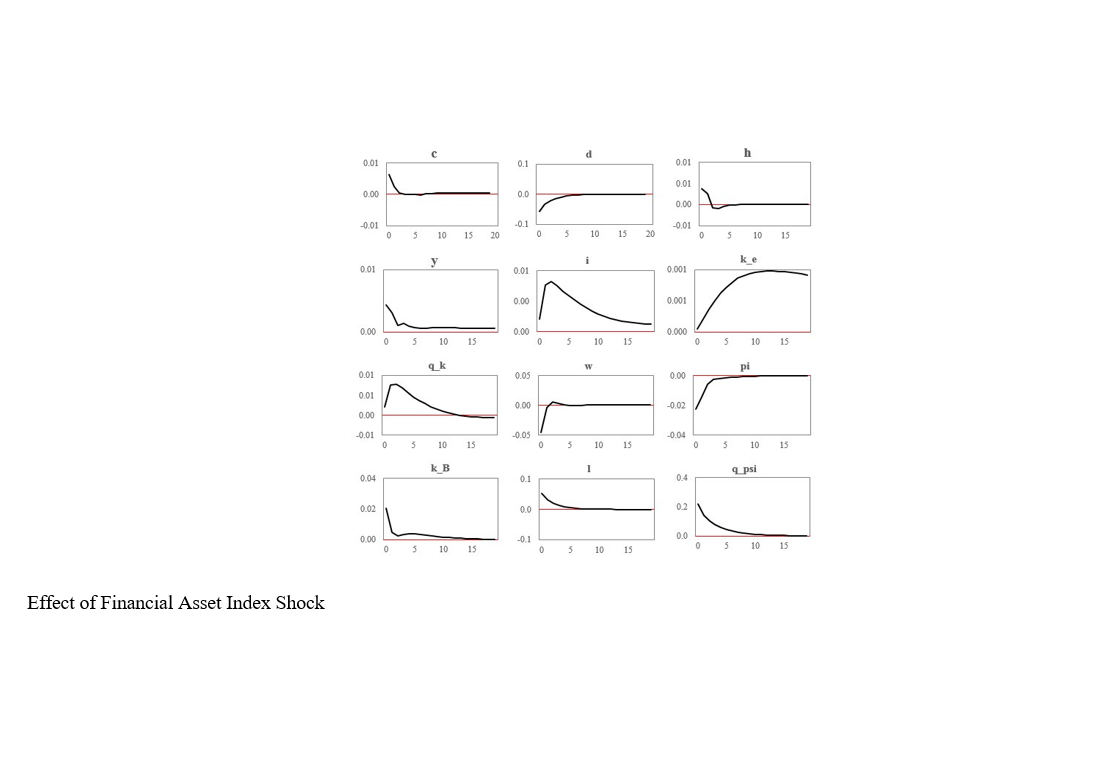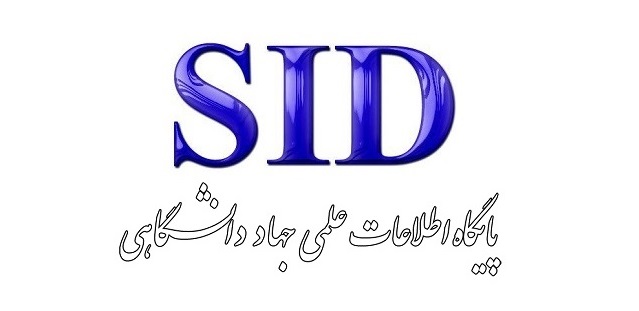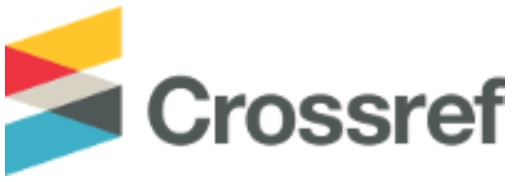Modeling the Mechanisms and Outcomes of Credit and Financial Shocks Using a Dynamic Stochastic General Equilibrium (DSGE) Model
Keywords:
Inflation rate, macroeconomic fluctuations, banking facilities, credit shocks, financial shocksAbstract
In the Iranian economy, changes in bank deposit interest rates—as tools for implementing credit and monetary policies—have become a major concern for policymakers and macroeconomic authorities, due to the various channels and mechanisms through which they affect the economy and contribute to economic fluctuations. An examination of the Central Bank’s monetary and credit policies and the trend of bank deposit interest rates over the past two decades affirms this concern. Monetary authorities, in response to inflationary changes on the one hand, and the need to finance the production sector on the other, have consistently been compelled to alter deposit interest rates. Simultaneously, the financial asset market has repeatedly experienced conditions of recession, expansion, and severe volatility. Therefore, it appears crucial that, in order to design and implement effective credit policies for Iran’s economy, a thorough investigation into the impacts of both stochastic and non-stochastic credit and financial shocks on key macroeconomic variables be conducted. Such policies should account for the mechanisms through which these shocks are transmitted to the economy and consider the implications of changes in deposit interest rates and lending rates. Particularly within the framework of models based on microeconomic theoretical foundations, the absence of a comprehensive and cohesive domestic body of literature on this topic underscores its significance even further. Previous studies indicate that incorporating the banking sector within DSGE models enhances the explanatory and fitting power of the models, aligning simulation results more closely with the actual behavior of macroeconomic variables in Iran. Prior research also reveals that financial frictions, financial and credit volatility, and changes in bank interest rates significantly affect the behavior of variables within the real economy. Consequently, the banking sector plays a critical role in triggering and amplifying macroeconomic fluctuations. The findings suggest that, in the event of both technology and oil revenue shocks, an inflation-targeting policy scenario induces less volatility in output and employment levels compared to an exchange rate-targeting scenario.
References
M. Forni, "Nonlinear Transmission of Financial Shocks: Some New Evidence," Journal of Money Credit and Banking, vol. 56, no. 1, pp. 5-33, 2023, doi: 10.1111/jmcb.13099.
L. Alfaro, M. García-Santana, and E. Moral-Benito, "On the direct and indirect real effects of credit supply shocks," Journal of Financial Economics, vol. 139, no. 3, pp. 895-921, 2021, doi: 10.1016/j.jfineco.2020.09.004.
G. I. Temba, P. S. Kasoga, and C. M. Keregero, "Impact of the quality of credit risk management practices on financial performance of commercial banks in Tanzania," SN Business & Economics, vol. 4, no. 3, p. 38, 2024, doi: 10.1007/s43546-024-00636-3.
Y.-H. Lin, "Blockchain-Driven Framework For financing Credit in Small And medium-Sized Real Estate Enterprises," Journal of Enterprise Information Management, vol. 37, no. 1, pp. 201-229, 2024, doi: 10.1108/jeim-01-2023-0032.
O. Zham, V. Rudyka, T. Voronko-Nevidnycha, S. Bebko, C. Shikovets, and H. Kvita, "Diagnostics of the strategic management of the financial and economic development of the enterprise," Financial and credit activity: problems of theory and practice, vol. 5, no. 52, pp. 162-172, 2023. [Online]. Available: https://fkd.net.ua/index.php/fkd/article/download/4214/3936/19880.
A. Cesa-Bianchi, A. Ferrero, and A. Rebucci, "International credit supply shocks," Journal of International Economics, vol. 112, pp. 219-237, 2018, doi: 10.1016/j.jinteco.2017.11.006.
A. Cesa-Bianchi and A. Sokol, Financial shocks, credit spreads and the international credit channel. 2017.
A. Cesa‐Bianchi and E. Fernandez‐Corugedo, "Uncertainty, financial frictions, and nominal rigidities: A quantitative investigation," Journal of Money, Credit and Banking, vol. 50, no. 4, pp. 603-636, 2018, doi: 10.1111/jmcb.12505.
J. Boivin, M. P. Giannoni, and D. Stevanović, "Dynamic effects of credit shocks in a data-rich environment," Journal of Business & Economic Statistics, vol. 38, no. 2, pp. 272-284, 2020, doi: 10.1080/07350015.2018.1497507.
S. Claessens and M. A. Kose, Macroeconomic implications of financial imperfections: a survey. 2017.
S. Choi, "The impact of US financial uncertainty shocks on emerging market economies: an international credit channel," Open Economies Review, vol. 29, no. 1, pp. 89-118, 2018, doi: 10.1007/s11079-017-9471-y.
P. Alessandri and H. Mumtaz, "Financial regimes and uncertainty shocks," Journal of Monetary Economics, vol. 101, pp. 31-46, 2019, doi: 10.1016/j.jmoneco.2018.05.001.
N. B. Zeev, "Global credit supply shocks and exchange rate regimes," Journal of International Economics, vol. 116, pp. 1-32, 2019, doi: 10.1016/j.jinteco.2018.10.002.
F. Benguria and A. M. Taylor, "After the panic: Are financial crises demand or supply shocks? Evidence from international trade," American Economic Review: Insights, vol. 2, no. 4, pp. 509-26, 2020, doi: 10.1257/aeri.20190533.
S. Kim and A. Mehrotra, "Examining macroprudential policy and its macroeconomic effects-some new evidence," Journal of International Money and Finance, vol. 128, p. 102697, 2022, doi: 10.1016/j.jimonfin.2022.102697.
A. Gavazza and A. Lanteri, "Credit shocks and equilibrium dynamics in consumer durable goods markets," The Review of Economic Studies, vol. 88, no. 6, pp. 2935-2969, 2021, doi: 10.1093/restud/rdab004.
J. Boeckx, M. de Sola Perea, and G. Peersman, "The transmission mechanism of credit support policies in the euro area," European Economic Review, vol. 124, p. 103403, 2020, doi: 10.1016/j.euroecorev.2020.103403.
B. Morais, J. L. Peydró, J. Roldán‐Peña, and C. Ruiz‐Ortega, "The international bank lending channel of monetary policy rates and QE: Credit supply, reach‐for‐yield, and real effects," The Journal of Finance, vol. 74, no. 1, pp. 55-90, 2019, doi: 10.1111/jofi.12735.
O. O. Olajide and A. Temidayo, "Further insights on monetary transmission mechanism in Nigeria," Journal of Economics and International Finance, vol. 14, no. 2, pp. 11-22, 2022, doi: 10.5897/JEIF2020.1037.

Downloads
Published
Submitted
Revised
Accepted
Issue
Section
License
Copyright (c) 2025 Mohammad Ranjbari (Author); Hossein Izadi (Corresponding author); Hossein Jahangirnia , Majid Zanjerdar (Author)

This work is licensed under a Creative Commons Attribution-NonCommercial 4.0 International License.











